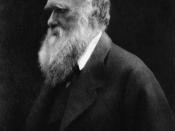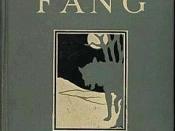Jack London did not adhere to any particular philosophical or critical theories. Instead, he fluctuated from one critical view to another as the moment seemed to warrant it. Perfect proof of this statement lies in the fact that The Call of the Wild (1903) shows the Darwinian theories of "survival of the fittest," as a dog is taken from its civilized Southland and is placed in the primitive North, where it must learn to cope with all sorts of primitive conditions if it is to survive. Then only three years later, London was to write the antithesis to this story in White Fang (1906), showing how a wild animal of the North who has been severely mistreated can, through a change in environment and proper attention, be changed into a civilized animal of the Southland.
When Jack London was born in 1876, Charles Darwin's theories of evolution dominated the scientific and theological world, and London utilized many of Darwin's theories in his writings.
Essentially, this theory of evolution investigated the sources from which modern man developed and tried to describe how modern man was a result of a long period of evolution from other organisms (the most popular theory concerns the concept that somewhere back in time, both man and ape-like animals were descended from a common ancestor). During this process of evolution, all living things were subjected to a process known as "natural selection," which means that only those species which are most adaptable to any given place or environment are able to survive. Accordingly, we have the concept of the "survival of the fittest." This is one of the dominant concepts in The Call of the Wild and also in White Fang. For example, of all the dogs that are taken to the Great North, only Buck...


